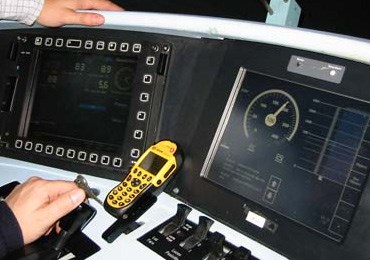Friday 14 Dec 2012
Capacity, efficiency, safety - Network Rail and ATOC back 30-year Rail Technical Strategy
- Region & Route:
- Scotland’s Railway: Scotland
New technology that could boost the capacity of the network and allow operators to run more trains, more often, and more efficiently has been unveiled this week.
The Rail Technical Strategy (RTS), unveiled at the British Library yesterday, maps out opportunities to transform the network over the next 30 years.
Network Rail and the Association of Train Operating Companies (ATOC) have joined with the RSSB and the rest of the industry in the Technical Strategy Leadership Group (TSLG) in preparing a strategy to make the most of existing technologies and foster new ideas in areas which have the potential to transfer technology from other sectors to railway applications – including nanotechnology.
Steve Yianni, Network Rail’s technical director and the chair of the TSLG, said: “We cannot work on one part of the system without affecting another, so we know that our approach has to be holistic, from the way the track relates to the trains and the trains to the signalling.
“By working together as an industry we have already unlocked opportunities for innovation – and new funding – and the potential to develop more innovative approaches to running the railway has been recognised.”
Michael Roberts, ATOC Chief Executive, said: “The recent growth in passenger journeys and satisfaction heralds a bright future for rail. By harnessing technology, rail can go further in providing an attractive, affordable and green way to travel.
“The refreshed Rail Technical Strategy helps us do that by setting out a whole-industry view on the key technical opportunities and on the vital need to stimulate innovation in the railways.”
Examples of technology the Railway Technical Strategy (RTS) sees as having an impact include the European Rail Traffic Management System (ERTMS), an in-cab signalling system that Network Rail and ATOC are working together to deliver with RSSB and the rest of the industry as a whole.
Lineside signalling maintenance costs £100m a year and by enabling traffic management to move inside the trains, and reducing the number of control centres, a large cost saving can be made, while maintaining and improving upon safety and capacity.
Another key driver of greater efficiency and reliability identified by the RTS is preventative maintenance.
Network Rail has been developing automated methods of lineside inspection, including plain line pattern recognition, and has also been further developing remote asset monitoring. Similarly, around 40 % of trains run by operators in Great Britain are already equipped with diagnostic technology which allows the units to detect potential faults as they develop.
In terms of the customer experience, operators are already exploring ways that smart ticketing could offer more flexible fares and offer a better a deal for passengers and taxpayers.
Like other retailers, train companies are offering people new ways to buy tickets to reflect changing lifestyles and make the most of new technology. In the last five years, tickets sold via the internet have more than trebled, those bought at ticket machines have nearly doubled while those sold at ticket offices have declined by just over a third.
The RTS also calls for a greater spread of 25kv electrification – due in the next 10 years on the Midland main line and the Great Western main line – including bringing it to areas currently fitted with third rail electrification, to take advantage of greater transmission efficiency and provide enhanced capacity.
With greater automation and the development of new technology, Britain’s trains will keep moving as more and more people find their way back to rail.
Notes to editors
The Rail Technical Strategy can be found at www.futurerailway.org
It is produced by the Technical Strategy Leadership Group for and on behalf of the rail industry in Great Britain, and facilitated by the Rail Safety and Standards Board.
Contact information
Passengers / community members
Network Rail national helpline
03457 11 41 41
Latest travel advice
Please visit National Rail Enquiries
Journalists
Network Rail press office - Scotland
0141 555 4109
mediarelations@networkrail.co.uk
About Network Rail
We own, operate and develop Britain's railway infrastructure; that's 20,000 miles of track, 30,000 bridges, tunnels and viaducts and the thousands of signals, level crossings and stations. We run 20 of the UK's largest stations while all the others, over 2,500, are run by the country's train operating companies.
Usually, there are almost five million journeys made in the UK and over 600 freight trains run on the network. People depend on Britain's railway for their daily commute, to visit friends and loved ones and to get them home safe every day. Our role is to deliver a safe and reliable railway, so we carefully manage and deliver thousands of projects every year that form part of the multi-billion pound Railway Upgrade Plan, to grow and expand the nation's railway network to respond to the tremendous growth and demand the railway has experienced - a doubling of passenger journeys over the past 20 years.
Follow us on Twitter: @networkrail
Visit our online newsroom: www.networkrailmediacentre.co.uk

